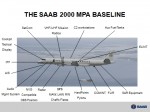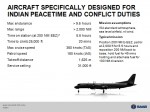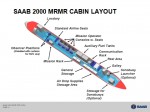China has officially put the United States on notice that Washington’s planned attack on Pakistan will be interpreted as an act of aggression against Beijing. This blunt warning represents the first known strategic ultimatum received by the United States in half a century, going back to Soviet warnings during the Berlin crisis of 1958-1961, and indicates the grave danger of general war growing out of the US-Pakistan confrontation.
“Any Attack on Pakistan Would be Construed as an Attack on China”
Responding to reports that China has asked the US to respect Pakistan’s sovereignty in the aftermath of the Bin Laden operation, Chinese Foreign Ministry spokesperson Jiang Yu used a May 19 press briefing to state Beijing’s categorical demand that the “sovereignty and territorial integrity of Pakistan must be respected.” According to Pakistani diplomatic sources cited by the Times of India, China has “warned in unequivocal terms that any attack on Pakistan would be construed as an attack on China.” This ultimatum was reportedly delivered at the May 9 China-US strategic dialogue and economic talks in Washington, where the Chinese delegation was led by Vice Prime Minister Wang Qishan and State Councilor Dai Bingguo. Chinese warnings are implicitly backed up by that nation’s nuclear missiles, including an estimated 66 ICBMs, some capable of striking the United States, plus 118 intermediate-range missiles, 36 submarine-launched missiles, and numerous shorter-range systems.
Support from China is seen by regional observers as critically important for Pakistan, which is otherwise caught in a pincers between the US and India: “If US and Indian pressure continues, Pakistan can say ‘China is behind us. Don’t think we are isolated, we have a potential superpower with us,’” Talat Masood, a political analyst and retired Pakistani general, told AFP.
The Chinese ultimatum came during the visit of Pakistani Prime Minister Gilani in Beijing, during which the host government announced the transfer of 50 state-of-the-art JF-17 fighter jets to Pakistan, immediately and without cost. Before his departure, Gilani had stressed the importance of the Pakistan-China alliance, proclaiming: “We are proud to have China as our best and most trusted friend. And China will always find Pakistan standing beside it at all times….When we speak of this friendship as being taller than the Himalayas and deeper than the oceans it truly captures the essence of our relationship.” These remarks were greeted by whining from US spokesmen, including Idaho Republican Senator Risch.
The simmering strategic crisis between the United States and Pakistan exploded with full force on May 1, with the unilateral and unauthorized US commando raid alleged to have killed the phantomatic Osama bin Laden in a compound at Abottabad, a flagrant violation of Pakistan’s national sovereignty. The timing of this military stunt designed to inflame tensions between the two countries had nothing to do with any alleged Global War on Terror, and everything to do with the late March visit to Pakistan of Prince Bandar, the Saudi Arabian National Security Council chief. This visit had resulted in a de facto alliance between Islamabad and Riyadh, with Pakistan promising troops to put down any US-backed color revolution in the kingdom, while extending nuclear protection to the Saudis, thus making them less vulnerable to US extortion threats to abandon the oil-rich monarchy to the tender mercies of Tehran. A joint move by Pakistan and Saudi Arabia to break out of the US empire, whatever one may think of these regimes, would represent a fatal blow for the fading US empire in South Asia.
As for the US claims concerning the supposed Bin Laden raid of May 1, they are a mass of hopeless contradictions which changes from day to day. An analysis of this story is best left to literary critics and writers of theatrical reviews. The only solid and uncontestable fact which emerges is that Pakistan is the leading US target — thus intensifying the anti-Pakistan US policy which has been in place since Obama’s infamous December 2009 West Point speech.
Gilani: Full Force Retaliation to Defend Pakistan’s Strategic Assets
The Chinese warning to Washington came on the heels of Gilani’s statement to the Pakistan Parliament declaring: “Let no one draw any wrong conclusions. Any attack against Pakistan’s strategic assets, whether overt or covert, will find a matching response…. Pakistan reserves the right to retaliate with full force. No one should underestimate the resolve and capability of our nation and armed forces to defend our sacred homeland.” A warning of full force retaliation from a nuclear power such as Pakistan needs to be taken seriously, even by the hardened aggressors of the Obama regime.
The strategic assets Gilani is talking about are the Pakistani nuclear forces, the key to the country’s deterrent strategy against possible aggression by India, egged on by Washington in the framework of the US-India nuclear cooperation accord. The US forces in Afghanistan have not been able to conceal their extensive planning for attempts to seize or destroy Pakistan’s nuclear bombs and warheads. According to a 2009 Fox News report, “The United States has a detailed plan for infiltrating Pakistan and securing its mobile arsenal of nuclear warheads if it appears the country is about to fall under the control of the Taliban, Al Qaeda or other Islamic extremists.” This plan was developed by General Stanley McChrystal when he headed the US Joint Special Operations Command at Fort Bragg, North Carolina. JSOC, the force reportedly involved in the Bin Laden operation. is composed of Army Delta Force, Navy SEALs and “a high-tech special intelligence unit known as Task Force Orange.” “Small units could seize [Pakistan’s nukes], disable them, and then centralize them in a secure location,” claimed a source quoted by Fox.
Obama Has Already Approved Sneak Attack on Pakistan’s Nukes
According to the London Sunday Express, Obama has already approved an aggressive move along these lines: “US troops will be deployed in Pakistan if the nation’s nuclear installations come under threat from terrorists out to avenge the killing of Osama Bin Laden… The plan, which would be activated without President Zardari’s consent, provoked an angry reaction from Pakistan officials… Barack Obama would order troops to parachute in to protect key nuclear missile sites. These include the air force’s central Sargodha HQ, home base for nuclear-capable F-16 combat aircraft and at least 80 ballistic missiles.” According to a US official, “The plan is green lit and the President has already shown he is willing to deploy troops in Pakistan if he feels it is important for national security.”
Extreme tension over this issue highlights the brinksmanship and incalculable folly of Obama’s May 1 unilateral raid, which might easily have been interpreted by the Pakistanis as the long-awaited attack on their nuclear forces. According to the New York Times, Obama knew very well he was courting immediate shooting war with Pakistan, and “insisted that the assault force hunting down Osama bin Laden last week be large enough to fight its way out of Pakistan if confronted by hostile local police officers and troops.”
The Shooting Has Already Started
The shooting between US and Pakistani forces escalated on Tuesday May 17, when a US NATO helicopter violated Pakistani airspace in Waziristan. Pakistani forces showed heightened alert status, and opened fire immediately, with the US helicopter shooting back. Two soldiers at a Pakistani check post on the border in the Datta Khel area were wounded.
Possible Pakistani retaliation for this border incursion came in Peshawar on Friday, May 20, when a car bomb apparently targeted a 2-car US consulate convoy, but caused no American deaths or injuries. One Pakistani bystander was killed, and several wounded. In other intelligence warfare, Ary One television reported the name of the CIA station chief in Islamabad, the second top US resident spook there to have his cover blown in six months.
US Envoy Grossman Rejects Pakistani Calls To Stop Border Violations
US Special Representative to Afghanistan and Pakistan Marc Grossman, the replacement for the late Richard Holbrooke, on May 19 arrogantly rejected Pakistani calls for guarantees that no more Abottabad-style unilateral operations would be mounted in Pakistan. In refusing to offer such assurances, Grossman claimed that Pakistani officials had never demanded respect for their border in recent years.
In the midst of this strategic crisis, India has gone ahead with inherently provocative scheduled military maneuvers targeting Pakistan. This is the “Vijayee Bhava” (Be Victorious) drill, held in the Thar desert of north Rajastan,. This atomic-biological-chemical Blitzkrieg drill involves the Second Armored Corps, “considered to be the most crucial of the Indian Army’s three principal strike formations tasked with virtually cutting Pakistan in two during a full-fledged war.”
The Nation: A CIA-RAW-Mossad Pseudo-Taliban Countergang
One way to provide the provocation needed to justify a US-Indian attack on Pakistan would be through an increase in terrorist actions attributable to the so-called Taliban. According to the mainstream Pakistani media, the CIA, the Israeli Mossad, and the Indian RAW (Research and Analysis Wing) have created their own version of the Taliban in the form of a terrorist countergang which they control and direct. According to one account, “Central Intelligence Agency (CIA) operatives have infiltrated the Taliban and Al-Qaeda networks, and have created their own Tehrik-e-Taliban Pakistan (TTP) force in order to destabilize Pakistan.” The former Punjab Regional Commander of the Pakistani Inter-Service Intelligence (ISI), retired Brigadier General Aslam Ghuman, commented: “During my visit to the US, I learned that the Israeli spy agency Mossad, in connivance with Indian agency RAW, under the direct supervision of CIA, planned to destabilize Pakistan at any cost.” Was this countergang responsible for last week’s double bombing in Waziristan, which killed 80 paramilitary police?
According to the same account, Russian intelligence “disclosed that CIA contractor Raymond Davis and his network had provided Al-Qaeda operatives with chemical, nuclear and biological weapons, so that US installations may be targeted and Pakistan be blamed….” Davis, a JSOC veteran himself, was arrested for the murder of two ISI agents, but then released by the Pakistani government after a suspicious hue and cry by the State Department.
CIA Claims The New Al Qaeda Boss Lives in Waziristan
If the US needs a further pretext for additional raids, it will also be easy to cite the alleged presence in Waziristan of Saif al-Adel, now touted by the CIA as bin Laden’s likely successor as boss of al Qaeda. It is doubtless convenient for Obama’s aggressive intentions that Saif al-Adel can be claimed to reside so close to what is now the hottest border in the world, and not in Finsbury or Flatbush.
In the wake of the unauthorized May 1 US raid, the Pakistani military chief General Kayani had issued his own warning that similar “misadventures” could not be repeated, while announcing that US personnel inside Pakistan would be sharply reduced. In the estimate of one ISI source, there are currently about 7,000 CIA operatives in country, many of them unknown to the Pakistani government. US-Pakistan intelligence sharing has reportedly been downgraded. In response to Kayani’s moves, the CIA limited hangout operation known as Wikileaks once again showed its real nature by attempting to discredit the Pakistan commander with dubious US cable reports that he had demanded more Predator drone attacks, not fewer, in recent years.
Especially since Obama’s West Point speech, the CIA has used Predator drone attacks to slaughter civilians with the goal of fomenting civil war inside Pakistan, leading to a breakup of the country along the ethnic lines of Punjab, Sind, Baluchistan, and Pushtunistan. The geopolitical goal is to destroy Pakistan’s potential to be the energy corridor between Iran and China. Selig Harrison has emerged as a top US advocate for Baluchistan succession.
Since May 1, six reported US Predator drones attacks have slain some 42 Pakistani civilians, goading public opinion into a frenzy of anti-US hatred. In response, a joint session of the Pakistani parliament voted unanimously on May 14 to demand an end to American missile strikes, calling on the government to cut NATO’s supply line to Afghanistan if the attacks should continue. Since the Karachi to Khyber Pass supply line carries as much as two thirds of the supplies needed by the Afghanistan invaders, such a cutoff would cause chaos among the NATO forces. All of this points to the inherent insanity of provoking war with the country your supply line runs through.
US Wants to Use Taliban Boss Mullah Omar Against Pakistan
The State Department dropped all preconditions for negotiating with the Taliban back in February, and the US is now reported by the Washington Post to be talking with envoys of Mullah Omar, the legendary one-eyed leader of the Quetta Shura or Taliban ruling council. It is apparent that the US is offering the Taliban an alliance against Pakistan. US regional envoy Grossman is hostile to the Pakistanis, but when it comes to the Taliban he has been nicknamed “Mr. Reconciliation.” By contrast, the US is said to be determined to assassinate the head of the Haqqani network using a Bin Laden-type raid. The Pakistanis are equally determined to keep the Haqqani as an ally.
If China stands behind Pakistan, then Russia might be said to stand behind China. Looking forward to the upcoming June 15 meeting of the Shanghai Cooperation Organization, Chinese President Hu praised Sino-Russian relations as being “at an unprecedented high point,” with an “obvious strategic ingredient.” In a press conference this week, Russian President Medvedev was obliged indirectly to acknowledge that the much-hyped Obama “reset” with Russia had amounted to very little, since the US ABM missile program in Romania and the rest of eastern Europe, so obviously directed against Russia, means that the START treaty is of dubious value, thus raising the specter of a “new Cold War.” Given the NATO assault on Libya, there would be no UN resolution against Syria, said Medvedev. Putin has been right all along, and Medvedev is trying to imitate Putin to salvage some chance of remaining in power.
Are We in July 1914?
The crisis leading to World War I began with the Sarajevo assassinations of June 28, 1914, but the first major declaration of war did not occur until August 1. In the interim month of July 1914, large parts of European public opinion retreated into a dreamlike trance, an idyllic la-la land of elegiac illusion, even as the deadly crisis gathered momentum. Something similar can be seen today. Many Americans fondly imagine that the alleged death of Bin Laden marks the end of the war on terror and the Afghan War. Instead, the Bin Laden operation has clearly ushered in a new strategic emergency. Forces which had opposed the Iraq war, from MSNBC to many left liberals of the peace movement, are variously supporting Obama’s bloody aggression in Libya, or even celebrating him as a more effective warmonger than Bush-Cheney because of his supposed success at the expense of Bin Laden. In reality, if there were ever a time to mobilize to stop a new and wider war, this is it.
(paktribune)Webster G. Tarpley

























